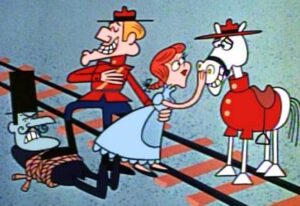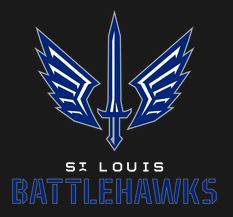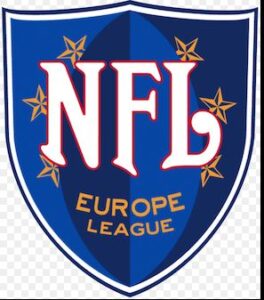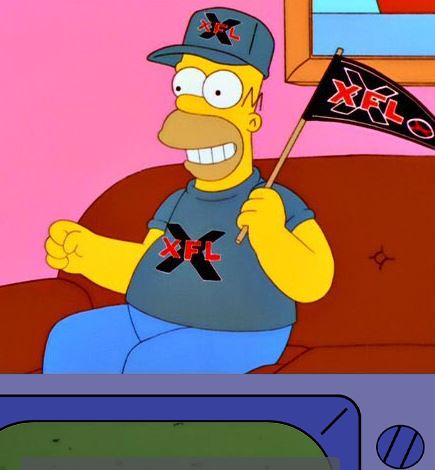Podcast: Play in new window | Download
Subscribe: RSS
The XFL recently completed Week #3 of its ten-game regular season. As we predicted a few weeks ago (they don’t call me “Swami” for nothing!), the XFL’s television ratings have plummeted after viewers sampled the first week of spring pro football games. Likewise, in-stadium attendance for the league has dropped from a lukewarm 15,000 per game in Week #1 down to about 10,000 fans per game in Weeks #2 and #3.
After just three weeks, the XFL is quickly moving toward being placed on life support.

Though the upcoming Week #4 revenues should improve with more than 30,000 fans expected to be on hand in St. Louis for the home debut of the 2-1 BattleHawks, the weekly costs needed to operate the eight-team XFL have remained constant.
One of the XFL’s primary owners is Dwayne “The Rock” Johnson. He has earned a ton of money from his pro wrestling and acting career. His net worth is estimated at $800 million.

Can you imagine how hard it must be for him to watch some of his career earnings being flushed down the XFL toilet every week?
STORY TIME!
Decades ago, I learned a bit of investment wisdom which has served me well. Most of us investors struggle when faced with the painful decision to sell a stock which is losing money.
For me, I feel lousy once any stock loses anywhere from 10-15% of its value after I purchase it. Eventually, I adopted a hard and fast rule to sell ANY stock once that negative threshold has been reached. At least I will retain 85-90% of the initial amount invested. Plus, if I still like the stock, I can try to purchase it again at a later date once the price hits the bottom and starts to climb again. .
For example, let’s say that I had purchased 100 shares of Enron (RIP) stock at $50 per share back in 1999. With my $5,000 invested in Enron, I would watch the price of that stock climb to over $80 per share by the summer of 2000. Woo hoo!
Alas, Enron’s bubble burst. News surfaced about some of the company’s shady internal financial affairs. The stock price was beaten into submission in just one year as it eventually fell to less than $2 per share.
If I had sold Enron at the top, I would have made $30/share or $3,000 on my initial investment!

If I sold Enron at $45/share (taking a 10% loss), $4,500 would still remain of the original $5,000 investment. It might sting, but not too badly.
But if I froze and failed to react as the stock price cratered, I would have lost $4,800 of the initial $5,000 investment in a little more than one year.
What does this have to do with the XFL? Plenty!
The moral of this story is to be honest with yourself after making a bad investment decision.

By placing a limit on the level of acceptable losses, you are prepared to take your financial lumps. Hopefully, you will learn from those mistakes and become a smarter investor in the future.
LET’S REVIEW HOW THE XFL (as an investment) IS PERFORMING FOR ITS OWNERS
After three weeks of the spring football league’s ten-game regular season, the weekly in-stadium attendance has fallen to around 10,000 fans per game. The television viewership has fallen to about 500,000 per game during Week #3 (down 50% from Week #1’s ratings).
On the revenue side of the XFL equation, let’s first look at ticket revenues. If the average net ticket price collected is about $20 per person (a fair estimate), weekly ticket sales would generate $200,000 in revenue per game. Let’s be generous and say that the average XFL fan in attendance will buy some concessions, a program, and other XFL merchandise to generate an additional $10 per person worth of profit while visiting the stadium. That raises the total up to $300,000 of stadium revenue generated from the fans in attendance at each game.
The X-pense (ha ha) side of the XFL’s ledger is fraught with danger.

There are 52 players per team earning an average of $6,000/week. The home team’s cost of football players ($312,000) already exceeds the in-stadium revenues being collected.
Don’t forget that the visiting team’s players must be paid, too! That doubles the cost for the players and raises the number to $624,000 per week per game to pay the XFL players.
The XFL must also pay for stadium rental (likely about $100,000 or more per week). Don’t forget the cost of other operational personnel, the referees, travel and food expenses, television production crews, and more.
The XFL’s home office staff must be paid every week, too.
The league is likely earning a share of the network television advertising revenues. However, with lower-than-expected TV ratings, network advertisers will be charged a lower effective ad rate for games where the number of viewers falls below projected levels. Ouch!
This trend is not the XFL’s friend. The league’s declining home attendance and sliding television ratings mean that the XFL owners are, quite possibly, hemorrhaging cash every week.
The XFL (conservatively) may be losing about $500,000 per game right now. With four games played every week, I am estimating that the XFL is losing $2 million per week every single week. If the losses continue through the end of the regular season and two weeks of playoff games, the XFL (version 3.0) could lose $25 million or more this spring.

If you can smell what the Rock is cooking, it is likely the odor of burning cash right now.
The XFL Version 3.0 is owned by Dwayne Johnson, former wife Dany Garcia, and RedBird Capital Partners.

As a long-time investor who absolutely hates to lose money, I can attest that it takes a strong constitution to stand firm and watch your money vaporize as the XFL’s owners are enduring right now.
What is the end game for the XFL? What are they trying to achieve?
On the football field, the level of play is fairly competitive. Spring pro football will always be considered minor league when being compared to the NFL. It isn’t a fair comparison.
The first mistake by the XFL was to begin play in 2023 immediately following the conclusion of the NFL season. The months of February and March are the culmination of winter. Indoor sports such as basketball are popular at this time of year for good reason.
Only the XFL’s St. Louis franchise will play its home football games in a domed stadium. Fans of the other seven teams are subjected to cold or wet (or both) conditions from week to week based on the league’s early start.

The XFL wanted to jump-start its season grab the spotlight from a direct competitor – the second-year USFL.
Some of the XFL’s current football players played in last season’s revamped USFL. The pay in both leagues is quite comparable. The level of competition is similar, too. I cannot detect a significant difference in the quality of play in either of the two spring football leagues.
The USFL’s new season will begin on a memorable day for most Americans. Beginning on Tax Day April 15, the USFL (owned exclusively by Fox Sports) will play its first slate of games. On the same weekend, the XFL will enter Week #9 of its ten-game regular season.
From April 15 through mid-May, there will be direct competition for television viewers between the USFL and the XFL.
Assuming that the XFL doesn’t shut down prior to the conclusion of its first season, an honest assessment should be made about Year #1.
Much like the old American Basketball Association (ABA) and the established NBA, spring professional football has not developed a large enough base of weekly television viewers to support one or two leagues.
Both spring pro football leagues are likely hoping that the NFL will ride to the rescue and partner with one or both soon.
I do think that it would be quite fun to see one or more NFL teams align with a spring pro football franchise (whether the XFL, USFL, or after a merger of the two leagues). The spring franchise could function as a developmental league for pro football much like the NBA’s developmental G-League and Major League Baseball’s minor leagues.

The NFL has a decision to make with regard to the XFL and USFL. I see only two possibilities:
- Do nothing at all (as they are doing today). Just scout for a few talented players and sign them as desired. Meanwhile, let the market sort out these two spring football leagues.
- Support spring pro football by jumping in. Hope that NFL fans will embrace a chance to see more of these younger players get a chance to play for an NFL team in the fall.
I think that the NFL has wisely maintained a hands-off approach. Should spring pro football start to generate sizable television ratings, you better believe that the NFL will move quickly to capitalize on any upside with spring football!
The NFL is extremely protective of its image and increasing the value of its 32 franchises. It does not want to associate with a failure if at all possible.

REMEMBERING THE NFL EUROPE (though the NFL would prefer that you didn’t)
From 1995-2007, the NFL attempted to grow the game worldwide by placing American pro football teams (using minor-league talent) in several European countries. Cities like Amsterdam (Netherlands), Barcelona (Spain), Berlin, Cologne, Frankfurt, Hamburg, and Dusseldorf (Germany) in addition to London and Scotland had teams in NFL Europe. Unfortunately, much of the fan interest in this league was coming from transplanted Americans and military personnel living nearby.
The NFL hasn’t given up on making money from the European market, though. The league continues to schedule a few early-season games in Europe every year. In this manner, the NFL owners maintain a strong merchandising presence in Europe without having to disrupt its very lucrative television-driven cash cow here in America.
As of March, 2023, the NFL and the rest of America just don’t seem very interested in spring professional football.
As for the XFL, their boat has already launched and still has more than 2/3 of a season remaining.
If the XFL happened to be one of my stocks, I would have already have my finger on the “Sell” button right now.

The XFL’s owners may see things differently. At a minimum, the losses might provide them with a sizable tax write-off by next year.

